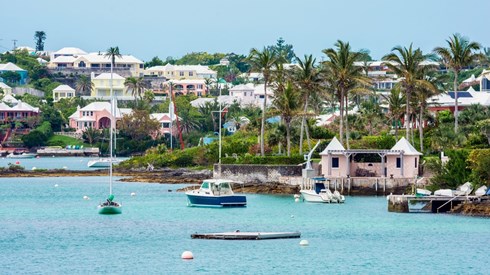Bermuda, Cayman Islands, and Barbados Captives Show Steady Performance

December 06, 2019

The operating results for A.M. Best-rated captive insurance companies in Bermuda, Cayman Islands, and Barbados (BCIB) continue to outperform the segment's counterparts in the commercial casualty sector, and in 2018, a new milestone was reached as net premiums earned surpassed $3.5 billion for the first time.
A.M. Best's rated captive composite reported a pretax income of approximately $1.0 billion, an 8.3 percent increase over the previous year. The combined ratio for BCIB captive composite deteriorated slightly in 2018 by a percentage point to 85.2; however, the 5-year (2014–2018) average combined ratio of 80.8 was nearly 20 points better than the 100.4 combined ratio posted by the BCIB captives' peers in the commercial casualty segment.
Between 2014 and 2018, A.M. Best said BCIB captives added $2.7 billion to their year-end capital and surplus and paid $1.4 billion in dividends. This translates into nearly $4.2 billion during this period, either remaining with these captives or paid back to policyholders and stockholders instead of going to the commercial market. The new high-water mark in net premiums earned comes as a result of strong economic growth in the United States and companies taking on new risk opportunities such as self-funded employee health insurance programs and cyber liability.
According to A.M. Best, captives no longer are formed solely to protect against the lack of available capacity or peaks in the market cycle. Instead, they have become a solution for companies interested in flexibility, risk financing, and more hands-on risk management for enhanced safety, loss control, and loss prevention. Captives have become more integral to corporations around the globe, and gaining efficiencies and improving margins through loss prevention and lower reinsurance costs have played important roles.
The BCIB segment's ability to keep loss ratios within a tight band speaks to the risk-transfer strategies of companies' management teams, despite recent higher-than-average catastrophe loss years, A.M. Best said. The purpose of captives may be to optimize risk financing and not necessarily to generate a profit, but in most years, the BCIB captive composite has returned positive results. Because of the BCIB captives' expertise, the similarity of the risks insured, and their proximity to those risks, they tend to be more nimble than the insurance industry overall and are able to adapt to these trends more quickly to improve outcomes faster than the standard market.
Copyright © 2019 A.M. Best Company, Inc., and/or its affiliates ALL RIGHTS RESERVED
December 06, 2019
